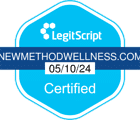“My buddies and I used to experiment with different kinds of drugs; I used to drink and smoke, but then I started vaping in order to quit smoking, and eventually I quit vaping altogether. Now, whenever someone offers me a drug, I just decline because I’ve been there, done that. It’s something I used to do in my ‘20’s but I grew out of it but I guess some people never grow out of it…” said Jon, 34, who with a look of disdain could not figure out why some of his old neighbors have chosen to stay on that path of drug abuse rather than do something productive with their lives. His comments raise the question: Why do some users become addicts while others can proceed to live normal lives without having to go through a medical detox or substance abuse treatment program? Wouldn’t all the anti-drug campaigns scare people from even wanting to experiment with drugs?
According to the National Institute on Drug Abuse, a variety of factors contribute to a person’s predisposition toward drug and alcohol addiction.
• Genetic factors account for 50% of an individual’s risk for addiction. This includes gender, ethnicity, and traces of mental illness in the person’s genealogy.
• Social influences from friends and family members may come in the form of peer pressure, abuse, and exposure to drugs and alcohol in the household.
• The developmental stage at which the individual began using determines the likelihood of addiction in the future. Kids and adolescents are especially vulnerable because illicit or recreational drugs interfere with the development of their brains, especially the cerebral regions that control judgment, decision-making, and self-control.
Your Brain on Drugs
Remember those days when commercials used to compare your brain too fried sunny-side-up eggs in a pan? Those powerful 15-second ads may have made an imprint on your memory but they did not explain how drugs actually change the structure of your brain. The levels of addictive power vary from drug to drug, but what they all have in common is this: they interrupt and disrupt the way your neurons communicate with each other. Every time you form a new habit, you are creating a new pathway in your brain. The more frequently you practice the habit, the more you reinforce and strengthen that pathway. In the same way, when you start using a drug, it can do any of the following:
• Activate neurons in the brain which sends abnormal messages throughout the body
• Release an excessive amount of neurotransmitters
• Prevent normal functioning, which disrupts and distorts communication channels within the brain
The sudden rush or high that a user experience is an example of an amplified, distorted message sent throughout the brain and the rest of the body. When messages hit the reward circuit of the brain, the emotion associated with the high is so strong that the brain wants to remember this experience and teaches the user to repeat the habit until the new pathway becomes more and more reinforced. Addiction can be psychological, physiological or both.
Retrain Your Brain through Psychoneuroplasticity (PNP)
The idea behind psychoneuroplasticity (PNP) is the belief that the brain can be restructured to permanently eliminate destructive behaviors and habits. Historically, PNP has been used to treat traumatic brain injuries, vision and hearing problems, chronic pain, and other ailments. New research development in substance abuse treatment shows that PNP can also be effective in treating substance use disorders. Methodically, psychoneuroplasticity is carried out by integrating holistic therapy with intensive psychotherapy, such as cognitive-behavioral therapy and dialectical behavioral therapy.
To learn more about PNP at New Method Wellness, contact us today to speak with our Outreach Coordinator!







